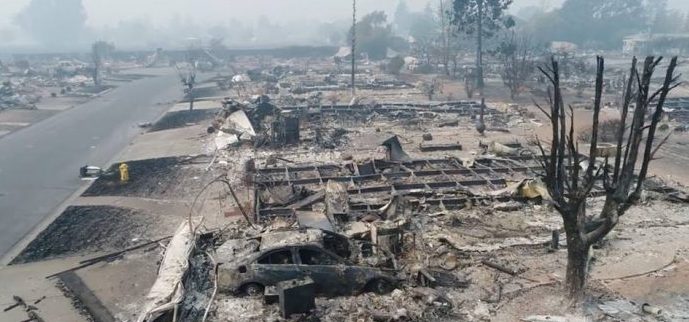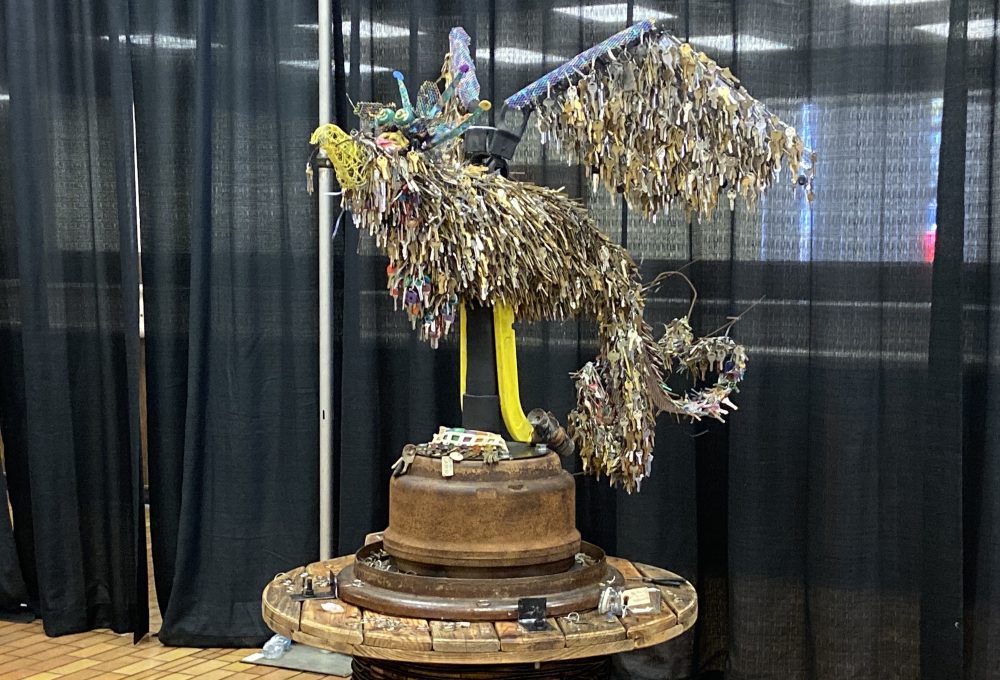Drought in U.S. Hits Western States Hard


During the month of July, the Center for Disaster Philanthropy is focusing on slow onset disasters, and one of those is drought.
The National Oceanic and Atmospheric Administration (NOAA) defines drought as a “complex phenomenon” of four types or components — which can exist individually, or collectively: meteorological drought (dry weather patterns), hydrological drought (when surface water — lakes, rivers, reservoirs — and groundwater is significantly lower than normal), agricultural drought (low soil moisture, affecting crops and livestock), and socioeconomic drought (when the water shortage effects daily life in communities).
During the past several years, several areas of the United States have been affected by drought. As conditions persist over time, the impact of drought becomes more severe, and significantly affects social and economic areas.
CDP’s Anna Newman recently had the opportunity to interview Steven Cain, Purdue Extension Disaster Specialist, who heads up the National Voluntary Organization’s Active in Disaster Drought Taskforce and National EDEN Issue Leadership Team on Drought.
CDP: What is the severity of U.S. drought this year and how does it compare to past years?
Steve Cain: You mentioned slow-onset disasters a few minutes ago, and that’s very true of droughts. Because we don’t usually start talking about drought until it’s already quite advanced, it is often misunderstood. In recent years, the three most costly disasters in the United States have been droughts. There was Hurricane Katrina [$148 billion in damage, 1,833 deaths], the drought and heat wave of 2012-13 [estimated $79 billion, 123 deaths], the drought and heat wave of 1988 [$78 billion, 10,000 deaths], Hurricane Sandy [$65 billion-plus, 159 deaths], and the drought and heat wave of 1980 [$56 billion]. The immense, ongoing nature of droughts is what makes it so devastating. Right now, 34 percent of the continental U.S. is in drought mode. Compared to past years, in April 2013, 52 percent of the nation was in that category; and in April 2013, 62 percent of the country was in that category.
CDP: What areas of the United States are most affected by drought right now?
Cain: Right now, California is one of the most severely affected areas – they are in their third consecutive year of drought. In January, the governor of California declared a drought emergency, and as of March 4, more than 94 percent of California’s $45 billion agricultural sector was experiencing severe, extreme, or exceptional drought. It is affecting their unemployment rates, and beginning to have a real environmental impact as well. In other areas, it really gets down to the local conditions. We’ve seen dustbowl conditions in areas of Kansas, but in other areas of the state, things look good. We’ve also seen drought conditions this year in the central Great Plains, from North Texas up through Oklahoma and southwest into parts of Colorado.
CDP: What are the affects of the current drought conditions?
Cain: I think the most important thing to remember is the water management aspect of things. There are several projects underway in California to work on awareness of water conservation, and some legislative discussion about allowing fines for wasting water, or excess usage. It’s difficult to police and enforce these types of measures, and I don’t know that the general population is aware enough of the long-term problems to have the true will to address the water management issue.
The second issue is the loss of crops and livestock. The crop insurance program does a tremendous job of recouping losses to farmers. There is no similar program for livestock producers. There are programs to allow emergency grazing, and the USDA plans to begin disaster assistance programs for livestock programs.
Then there are changes to natural resources, such as the issues with the Mississippi river in 2012-2013. There are other, more subtle changes as well, such as changes in bird migration; changes in plant and animal diseases because different insects come in during an extended drought. There begins to be a drop in farming income and purchases, which in turn affects communities and economics.
CDP: How has drought fed into other “disasters,” such as wildfires?
Cain: That’s a really good question. While drought has some impact on the severity of a wildfire, experts don’t always tie drought to wildfires because they occur in naturally dry areas anyway. Wildfires tend to be more a result of man’s interaction with environment.
What we do see in drought is environmental changes, such as dust bowl situations, a general increase of that dry soil getting picked up by the wind and mixed into the air. Soil movement is hard to measure because it happens so slowly. The soil is more vulnerable to large-scale erosion when it does finally rain — floods and erosion are significantly worse following a drought than in a time of normal moisture levels. Drought simply leaves natural resources more vulnerable to winds and heavy rains, and that also begins to impact man-made structures such as roads and bridges.
CDP: What programs are in place to help those affected by drought?
Cain: The first would obviously be the crop insurance I mentioned earlier. There’s also the non-insured crop program through the Farm Service Agency, and emergency haying and grazing programs. Some other programs in place to help mitigate droughts are the Environmental Quality Incentives Program, the Emergency Watershed Protection Program, and the Livestock Indemnity Program.
Certainly, extension offices offer a number of localized options and support to those most affected by droughts. I believe that there are 22 states have extension services directly related to drought, aiming to help producers and farmers and communities deal with these disasters in the most effective way possible for that particular area.
More like this

Northern California Wildfire Grants Support Most Vulnerable
